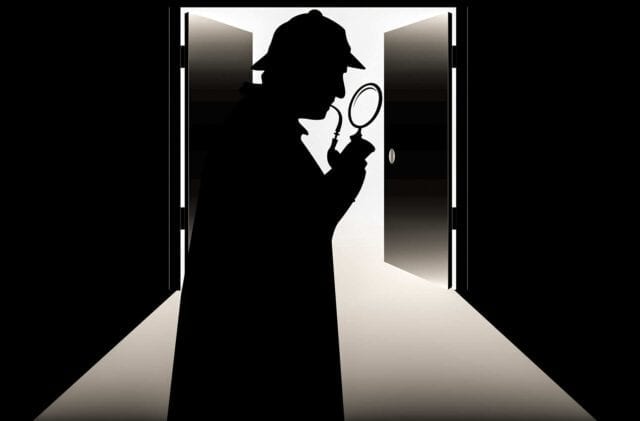When details count. Arild Syversen-Nordberg, forensic equipment specialist at the Joint Police Service (PFT) and examiner at the Police Academy.
DNA doesn't tell the whole story
When the police arrive at a crime scene, it's all about the details. Same when they check speed or detect driving under the influence drugs in street traffic. – Precision is both necessary and fatal, says Arild Syversen-Nordberg.
- DNA alone doesn't tell the story. Along with the fibers on the door, the fingerprints on the cup, the footprints in the gravel and the witness observation - then we see what has to do with it, says Nordberg. Forensics is a great precision and a small coincidence. It is quite far from the equipment and methods used in popular series.
Arild Syversen-Nordberg knows his trade. For many years he worked as a forensics technician in and around Kripos' fingerprint department. Currently, he works as the head of the forensic equipment subject at the Joint Police Service, and for several years he has also been an examiner at the Police Academy in the subject of forensics.
Forensic technical equipment
PFT ensures that the police have the necessary equipment and meet quality requirements. Arilda's main task is to develop solutions in collaboration with those who will be using the equipment - those who work in the field. Forensic equipment includes trace protection equipment, lighting equipment, body bags, intoxication analysis instruments, barrier tape and much more.
Arild is in regular contact with police personnel and works closely with the PFT user group in the forensics field. An important part of the development work is also contacting suppliers for improvements and new opportunities for police work.
-Participation in professional conferences and trade fairs in Europe is key to capturing new trends and new products, says Syversen-Nordberg
Cooperation is important
- A large part of my job is cooperation with other institutions. I work closely with Kripos, Oslo University Hospital (OUS) and Police Academy (PHS), as well as with professional communities in other Scandinavian countries.
It is important that all PFT products and solutions form a whole for users, which both ensures a good working day and contributes to their own safety. An example is lighting equipment. The flashlight must work with the service belt, there is a headlamp that is mounted on a helmet and in forensic vehicles as a work light.
More on-scene analyzes and reports
Thanks to new and modern equipment, the police can now start an immediate investigation into the case. Arild says the new car for a forensics technician makes it easier to perform more in-car analyzes and reports at the scene. This results in both improved track protection and time savings. The car has practical arrangement solutions that have been developed in close cooperation with the users. Such a car is a forensic technician's dream, says the clearly proud Syversen-Nordberg.
Another improvement that has simplified the daily life of forensic technicians is the hardware bundles that are used to record, call, search and secure evidence, as well as describe and document evidence.
Being at the forefront can be both exciting and challenging
- The crime scene is constantly changing and being at the forefront can be both exciting and challenging. This is Syversen-Nordberg here. - Police still secure fingerprints with 'powder and brush'. At the same time, we are now working on a product that will facilitate the use of a mobile phone for securing fingerprints.
The use of drones is another pilot project that has been completed. Now the police are using drones to, among other things, obtain general photos of the crime scene. For fires, accidents etc which is an important tool that makes a big difference.
The equipment of the future and the visualization of criminals' thinking is fascinating
We cooperate with "silent witnesses" in forensic investigations. This is Syversen-Nordberg here. It is about the actual findings at the crime scene, not what the person remembers or believes. What is observed and done during forensic work is documented and passed on.
- Today we are using both 360 degree panoramic photos and 3D scans of the crime scene to present the findings later. Maybe someday we'll use tools to visualize the event from A to Z, concludes Syversen-Nordberg. He's not as enthusiastic about popular crime drama series with easy evidence handling. However, visualizing the criminals' way of thinking is fascinating. Maybe one day it will become a standard tool for a forensics technician in the Norwegian police?




